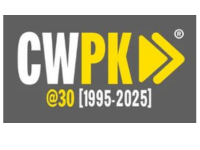In the 21st century, nanotechnology has emerged as a transformative force, revolutionizing various aspects of our lives. With its focus on materials and devices with nanometer dimensions, nanoscience and nanotechnology have found applications in engineering, energy, medicine, and more.
The development of nanomedicine has paved the way for groundbreaking treatments of diseases like cancer and cardiovascular disorders, while nanotechnology also holds immense potential in advancing clean energy technologies.
Pakistan has positioned itself as a dynamic player in the ever-evolving landscape of nanotechnology, thanks to the pioneering work of RISC-V International. This large member organization has successfully built the first open and collaborative community of software and hardware innovators, breaking away from traditional closed-source instruction set architecture (ISA). RISC-V, an open-source platform, allows for the design, modification, and development of processors based on its specifications. This openness and accessibility have propelled Pakistan’s institute onto the global stage, positioning it as a hub for cutting-edge microprocessor research and development.
RISC-V, often referred to as ‘Risk-five’, offers a multitude of benefits to the field of nanotechnology with its simplicity, scalability, and modularity. Designers can tailor processors to specific requirements, unlocking unprecedented flexibility and efficiency. The open-source nature of RISC-V also promotes the development of specialist accelerators and co-processors, facilitating rapid and optimized execution of tasks such as artificial intelligence, machine learning, and cryptography. This adaptability and specialization position RISC-V as a game-changer, empowering industries in Pakistan to harness the full potential of nanotechnology.
RISC-V’s momentum in Pakistan is further fueled by fruitful collaborations with international organizations and companies. Knowledge sharing through these partnerships propels collective progress in microprocessor development, enabling Pakistan to tap into global expertise and stay at the forefront of technological advancements. Moreover, Pakistan’s emphasis on education and research ensures that the next generation of engineers and researchers are well-equipped with the required skills to shape the future of nanotechnology. With RISC-V as a catalyst, Pakistan can capitalize on the transformative potential of open-source microprocessor architecture.
One exciting development in Pakistan’s nanotechnology landscape is the emergence of startups focusing on ASICs (Application-Specific Integrated Circuits) based on the RISC-V architecture. These startups, including MERL (Microelectronics Research Laboratory), are dedicated to designing ASICs tailored to the specifications of RISC-V. Through participation in competitions and the supervision of final year projects, MERL showcases its expertise in designing cutting-edge technologies such as microprocessors, system-on-chips, and RAM generators. The collaboration between MERL and universities not only integrates RISC-V into undergraduate curricula but also organizes training programs and workshops for professionals and students, fostering a deeper understanding of RISC-V and driving its advancement within Pakistan.
The adoption of RISC-V technology in Pakistan holds the potential to revolutionize a wide range of industries. Embedded systems and Internet of Things (IoT) devices can benefit from RISC-V’s power-efficient architecture, enabling the development of custom processors for smart agriculture, smart city applications, home automation, and defense. RISC-V’s affordability offers opportunities for startups to design innovative hardware products without the burden of expensive licensing fees, driving entrepreneurship and innovation in the country. Cloud and data centers in Pakistan can leverage RISC-V’s scalability and customization to achieve cost savings and improved performance, while academic research projects in AI, machine learning, and data science can accelerate advancements in these fields.
Looking ahead, the future of nanotechnology in Pakistan is promising as the country embraces the potential impact of RISC-V. This open-source instruction set architecture offers a solid foundation for advancing research, development, and innovation in nanotechnology. By leveraging RISC-V’s open-source ecosystem, Pakistan’s innovation landscape is poised for transformative changes, leading to breakthroughs in nanoscale materials, devices, and applications. Collaboration, knowledge exchange, and interdisciplinary advancements will play a crucial role in positioning Pakistan as a hub for cutting-edge nanotechnology research and development.
Pakistan’s adoption of RISC-V for nanotechnology applications signifies the country’s commitment to innovation and collaboration in the field. The open-source nature of RISC-V, combined with its scalability, customization, and modularity, offers immense possibilities for advancements in various industries, including nanotechnology, AI, IoT, and data analysis. By capitalizing on the ongoing developments and leveraging RISC-V’s open-source ecosystem, Pakistan’s institutes, startups, and industries can contribute to the growth and development of nanotechnology, fostering innovation and driving progress in this dynamic field. The future outlook for RISC-V in Pakistan’s nanotechnology landscape is brimming with possibilities, inspiring researchers, engineers, and entrepreneurs to unlock the full potential of nanotechnology and drive the country’s innovation forward.









